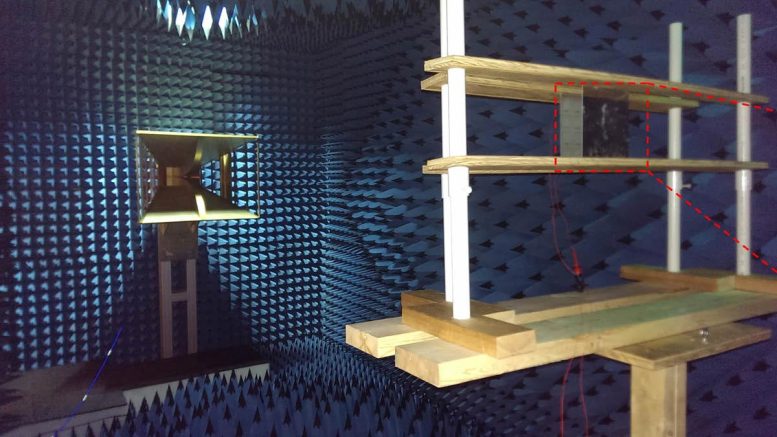
Technology could make it possible to use radio emissions from cell phone networks to wirelessly power sensors and LEDs.
Researchers have developed a new metasurface-based antenna that represents an important step toward making it practical to harvest energy from radio waves, such as the ones used in cell phone networks or Bluetooth connections. This technology could potentially provide wireless power to sensors, LEDs and other simple devices with low energy requirements.
“By eliminating wired connections and batteries, these antennas could help reduce costs, improve reliability and make some electrical systems more efficient,” said research team leader Jiangfeng Zhou from the University of South Florida. “This would be useful for powering smart home sensors such as those used for temperature, lighting and motion or sensors used to monitor the structure of buildings or bridges, where replacing a battery might be difficult or impossible.”
In the journal Optical Materials Express, the researchers report that lab tests of their new antenna showed that it can harvest 100 microwatts of power, enough to power simple devices, from low power radio waves. This was possible because the metamaterial used to make the antenna exhibits perfect absorption of radio waves and was designed to work with low intensities.

The researchers tested their metamaterial-based antenna in an anechoic chamber. The radio wave is sent out from the horn antenna on the left and received by the metasurface antenna mounted on the wood frame on the right. The anechoic chamber eliminates background signals from other sources and prevents stray signals from the radio wave source from bouncing around the room and perturbing measurements. The image of metamaterial-based antenna is enlarged on the right. Credit: Jiangfeng Zhou and Clayton Fowler
“Although more work is needed to miniaturize the antenna, our device crosses a key threshold of 100 microwatts of harvested power with high efficiency using ambient power levels found in the real world,” said Clayton Fowler, the team member who fabricated the sample and performed the measurements. “The technology could also be adapted so that a radio wave source could be provided to power or charge devices around a room.”
Harvesting energy from the air
Scientists have been trying to capture energy from radio waves for quite some time, but it has been difficult to obtain enough energy to be useful. This is changing thanks to the development of metamaterials and the ever-growing number of ambient sources of radio frequency energy available, such as cell phone networks, Wi-Fi, GPS, and Bluetooth signals.
“With the huge explosion in radio wave-based technologies, there will be a lot of waste electromagnetic emissions that could be collected,” said Zhou. “This, combined with advancements in metamaterials, has created a ripe environment for new devices and applications that could benefit from collecting this waste energy and putting it to use.”